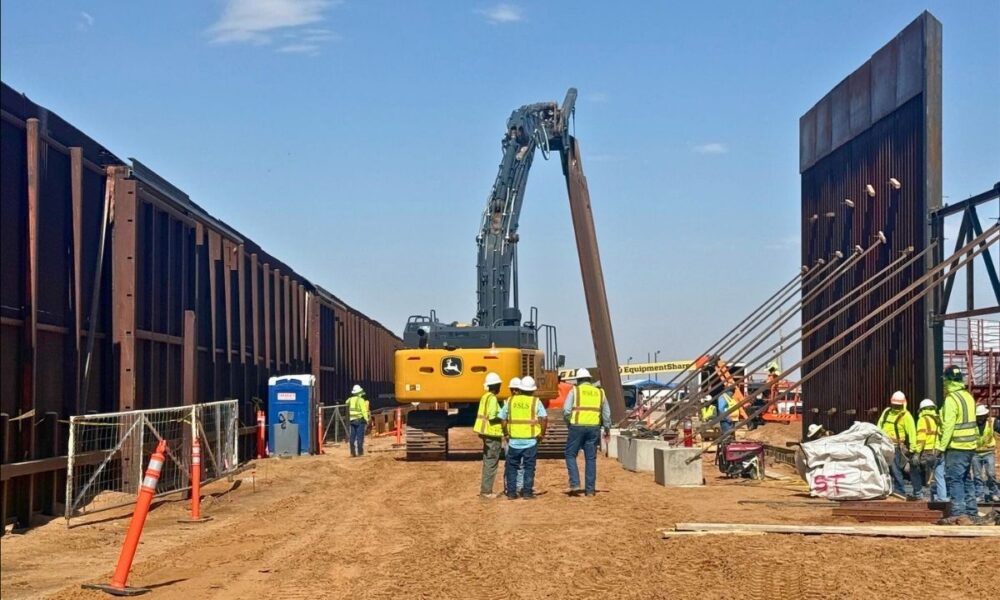Construction on the border wall has restarted in Texas, with federal and state agencies alike touting rapid progress and renewed commitments to securing the U.S.-Mexico border.
Chief Michael W. Banks, who heads the U.S. Border Patrol, posted:
Breaking ground in El Paso, TX!
Border wall construction is officially underway — 7 miles planned and over 100 feet of steel already installed on Day One. These 30-foot panels are going up fast. Border security isn’t just a mission — it’s a priority. pic.twitter.com/ZQw8ObqL2S— Chief Michael W. Banks (@USBPChief) July 16, 2025
Customs and Border Protection echoed the announcement on July 17, posting on X: “Across key sectors like San Diego, Yuma, Tucson, El Paso, and RGV, more than 85 miles of new wall are in planning or under construction at an accelerated pace. The border is being secured — and we are just getting started!”
Meanwhile, the state of Texas has pressed ahead with its own wall program, separate from federal efforts. On June 18, the Texas Facilities Commission (TFC) reported that “66.4 miles of the border wall program had been completed” and that “active construction is simultaneously underway at 15 locations in six border areas: Cameron, Starr, Zapata, Webb, Maverick, and Val Verde Counties.”
According to the TFC, Texas has also closed on 127 easements, with dozens more pending or in negotiation, signaling an expansion of the state’s footprint on the border.
The resumption of wall construction follows the recent passage of the “One Big Beautiful Bill” Act, which President Donald Trump signed into law on July 4. The bill allocates $165 billion to the Department of Homeland Security, with $46.5 billion earmarked specifically to complete the border wall.
“This $165 billion in funding will help the Department of Homeland Security and our brave law enforcement further deliver on President Trump’s mandate to arrest and deport criminal illegal aliens and MAKE AMERICA SAFE AGAIN!” said DHS Secretary Kristi Noem in a statement celebrating the legislation.
The bill also includes billions more for hiring Border Patrol and ICE personnel, purchasing surveillance technology, and expanding detention capacity. ICE is set to receive enough funding to support deportations of up to 1 million individuals per year and maintain detention space for 100,000 people at any given time, according to Noem’s press release.
However, critics of the wall continue to raise objections. A 2019 report from the Center for American Progress argued that the wall is “expensive, ineffective, and bad for the environment,” and contends it represents a misuse of eminent domain that violates property rights. Environmental groups, Native American tribes, and religious organizations have all launched lawsuits to halt construction in past years.
Despite opposition, the federal government and the state of Texas appear united in their push to expand physical barriers on the southern border. And with steel already planted again in El Paso, the wall — mostly dormant in recent years — is once more rising across the Texas landscape.


